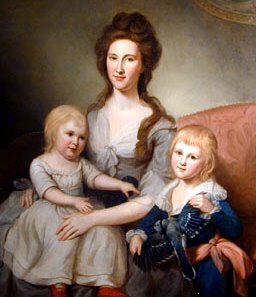1. What role did the revolutionary war play in republican motherhood?
Because so many men were away from their homes because of the revolution, women often became the leading figure in the household. The women brought up the children, teaching them and caring for them. Women watched over and kept up with the family's property.
2. What were the consequences of Republican Motherhood on women?
The shifting gender roles caused by the war created a lasting change in perspective among women of the time. Women were empowered by new control and freedoms they experienced during the war, and felt that they deserved education and equality. This feeling lingered after the war and influenced the following generations of women.
3. What is the significance of the ideology of Republican Motherhood as a stage in the process of women's socialization?
Republican Motherhood was a significant early stage in the women's socialization. Women sought equality, and did so by pursuing education, which in turn created a group of women able to fight for equality with an educated background. "The reformation of the world is in (women's) power" (Doc C).
1. Describe the setting
The family room of a wealthy home. A woman sits on her pinkish couch with her androgynous sons.
2.Who serves at the center of the portrait and why? How does the woman look? How is she "republican" rather than aristocratic?
She is the dominant figure in her house. She is the most influential person in her household, teaching her sons ideas and value systems. She looks stoic and powerful, an enlightened woman. Her dress represents "republican" values in its muted tones and lack of aristocratic excessiveness.
3. What values do her sons exhibit?
The influence of Republican Motherhood. They look like behaved children who love their mother and look up to her. They reflect her enlightened values.
4. Is there significance to the position of Mrs. Tilgham's arm?
It shows that she guides them and keeps her children close to her in order to properly educate them and protect them. She has restraint and control over her children, and will mold them into "proper" Americans with strong values.










